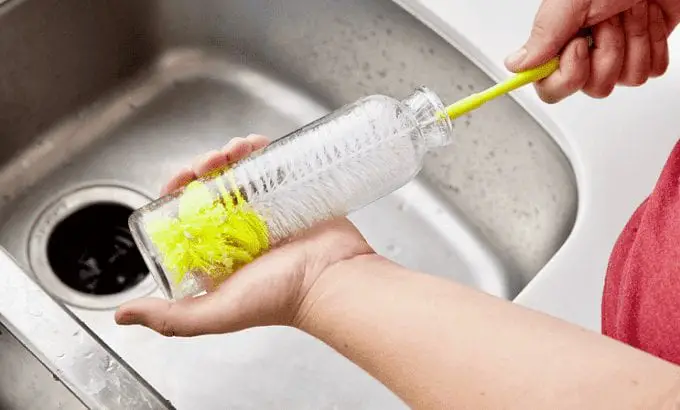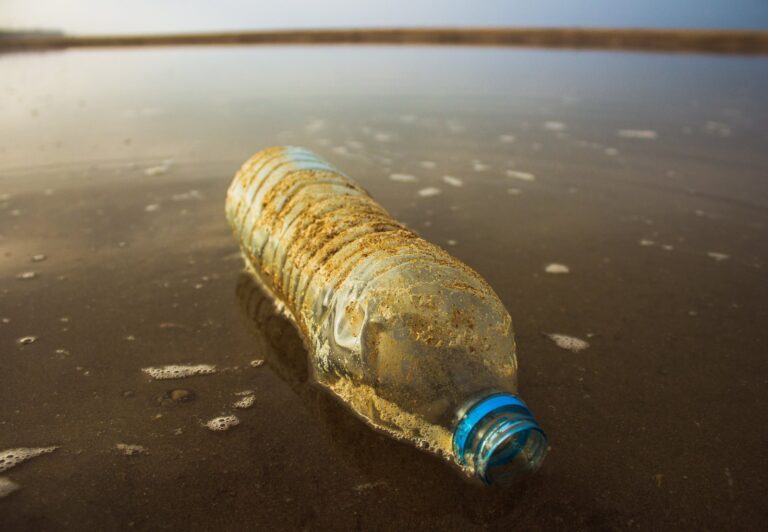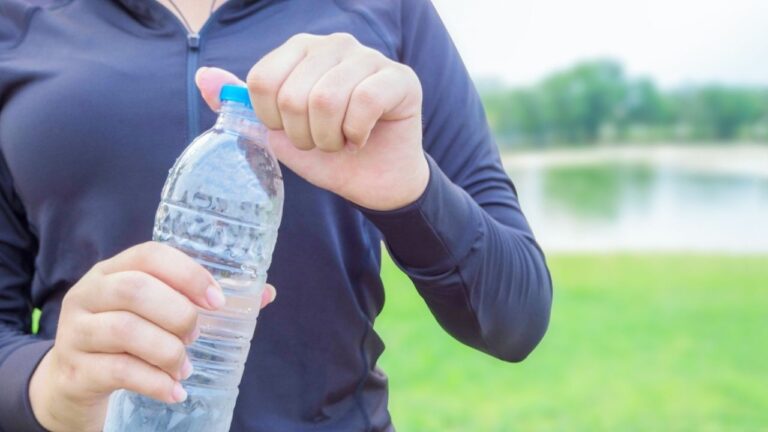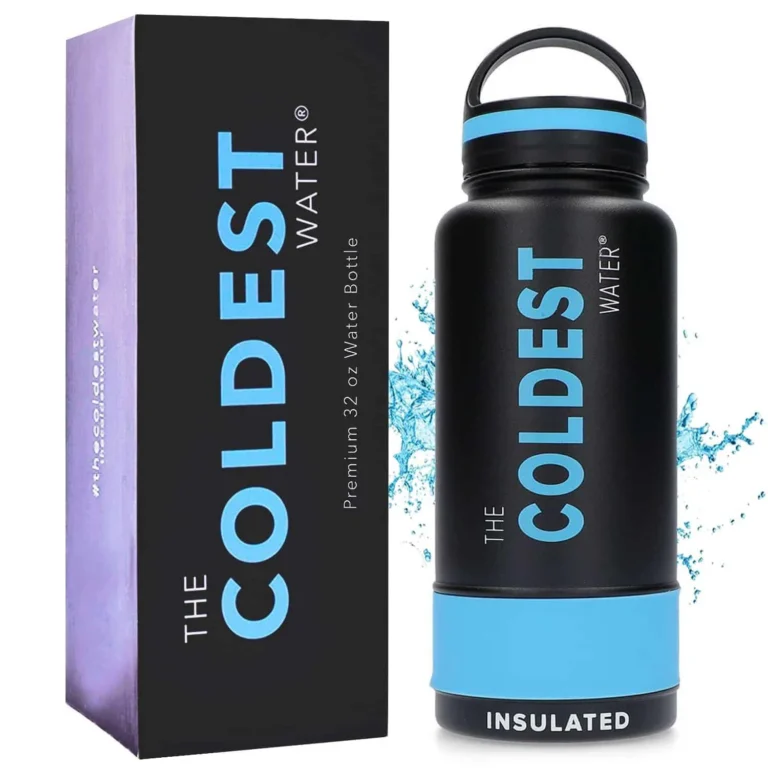How many of us actually pay attention to cleaning our water bottles properly? We often underestimate the importance of a pristine water bottle as we consider it to be just a vessel for holding water. However, did you know that failing to clean your water bottle correctly could lead to serious health risks? The germs and bacteria that can accumulate inside a dirty water bottle can cause illnesses like diarrhea, food poisoning, and even pneumonia. So, it’s critical to learn how to clean your water bottle properly to avoid these health risks and ensure the longevity and hygiene of your water bottle. In this blog post, we’ll cover some simple yet effective ways to clean your water bottle, so you can enjoy safe and clean drinking water.
I. Importance of cleaning water bottles
Water is an essential part of our daily lives, and so is the vessel that holds it – the water bottle. It’s easy to overlook the importance of cleaning our water bottles, but doing so is crucial to maintain our health and wellbeing. Throughout the day, our water bottles accumulate dirt, bacteria, and mold. Without regular cleaning, these contaminants can thrive and cause serious health issues. Cleaning your water bottle not only removes potential harmful substances but also ensures that you’re drinking clean, refreshing water. By adopting simple yet effective cleaning methods, you can keep your water bottle germ-free and extend its lifespan. So, let’s dive into the different cleaning techniques and solutions that will help you maintain a hygienic water bottle.
Common bacteria and mold found in water bottles
Water bottles are a convenient way to stay hydrated on the go, but did you know that they can also be a breeding ground for bacteria and mold if not properly cleaned? It’s important to understand the potential health risks associated with neglecting the cleanliness of your water bottle. According to a study conducted by TreadmillReviews.net, water bottles can contain an alarming amount of harmful bacteria, including E. coli and salmonella. Mold can also thrive in the warm, moist environment of a water bottle if left unclean. These microorganisms can pose serious health risks and lead to various illnesses. Thus, it is crucial to maintain proper hygiene by regularly cleaning your water bottle using effective methods and solutions.
II. Different Cleaning Methods
A. Warm soapy water
Keeping your water bottle clean is essential for maintaining good health and hygiene. One of the simplest and most effective ways to clean a water bottle is by using warm soapy water. This method is suitable for all types of water bottles, whether they are made of metal, glass, or plastic. To clean your water bottle with warm soapy water, start by disassembling any removable components, such as the lid or straw. Then, wash the bottle thoroughly using a sponge or bottle brush, making sure to reach all corners and crevices. Rinse the bottle with fresh water and leave it to air-dry completely before using it again. Cleaning your water bottle regularly with warm soapy water will help eliminate any bacteria or impurities, ensuring a safe and refreshing drinking experience.
Procedure
One of the most fundamental and essential steps in cleaning a water bottle properly is to have a clear procedure in mind. It may seem like a simple task, but having a set method ensures that all areas of the bottle are thoroughly cleaned and that no harmful bacteria or mold is left behind.
To start, the first procedure idea is using warm soapy water. This method is suitable for all types of water bottles, whether they are made of metal, glass, or plastic. Begin by rinsing the bottle with warm water, then fill it with soapy water and use a bottle brush to scrub the inside and outside surfaces. Rinse well with clean water, and air dry or use a clean towel to dry.
Remember, always split any paragraph more than three sentences to make it easier to read and digest the information.
Suitable for all types of water bottles (metal, glass, plastic)
One of the advantages of using warm soapy water to clean water bottles is its versatility. This cleaning method is suitable for all types of water bottles, regardless of whether they are made of metal, glass, or plastic. The warm soapy water helps to loosen and remove any residue or bacteria that may be present on the surface of the bottle. To clean your water bottle using this method, simply fill it with warm water and a small amount of dish soap, then use a bottle brush to scrub the inside of the bottle thoroughly. Rinse the bottle well after cleaning to ensure that all soap residue is removed. This simple and effective cleaning method ensures that your water bottle is properly cleaned and ready for use.
B. White vinegar solution
White vinegar is a versatile cleaning agent that can effectively eliminate bacteria and mold in water bottles. To clean your stainless steel water bottle using this solution, begin by filling it halfway with equal parts white vinegar and warm water. Allow the solution to sit for about an hour to effectively sterilize the bottle. Afterward, rinse the bottle thoroughly with hot water to remove any lingering vinegar taste. This method is particularly ideal for stainless steel bottles due to vinegar’s ability to remove mineral deposits and stains. Additionally, the acidic properties of vinegar can effectively combat bacteria and mold. Remember, always read the manufacturer’s instructions before cleaning your water bottle, as some materials may not be suitable for vinegar or require specific cleaning methods.
Procedure
To properly clean a water bottle, you’ll need to follow a specific procedure that ensures all the nooks and crannies are thoroughly scrubbed. First, start with warm soapy water. Fill your sink or a basin with warm water and add a small amount of dish soap. Then, disassemble your water bottle, removing any detachable parts such as the lid or straw. Submerge the bottle and its parts in the soapy water and use a bottle brush to scrub away any dirt or bacteria. Rinse everything thoroughly before reassembling the bottle. This method is suitable for all types of water bottles, including metal, glass, and plastic. By using warm soapy water, you’ll effectively eliminate germs and odors, ensuring your water bottle stays clean and safe to use.
Ideal for stainless steel water bottles
Cleaning stainless steel water bottles can be a bit trickier than cleaning other types of bottles. However, there is a simple and effective solution: white vinegar. White vinegar is known for its natural cleaning properties and ability to eliminate odors. To clean your stainless steel water bottle with white vinegar, start by filling it halfway with a mixture of equal parts white vinegar and water. Let the solution sit for a few minutes, then give it a good shake. Be sure to pay extra attention to any tough stains or residue. After shaking, rinse the bottle thoroughly with warm water. This method is ideal for stainless steel bottles as it effectively removes stubborn dirt and leaves your bottle fresh and clean.
C. Baking soda and bleach
Baking soda and bleach can be a powerful combination for tackling hard-to-clean grime and mildew in water bottles. While warm soapy water and vinegar solutions work well for general cleaning, sometimes there are stubborn stains or tough odors that need extra attention.
To begin the process, create a paste by combining baking soda and water until it forms a thick consistency. Apply this paste to the problem areas of the water bottle and let it sit for a few minutes. Then, using a bottle brush or sponge, scrub the surface until the grime or mildew is removed.
If the stains persist, you can try using a diluted bleach solution. Mix one part bleach with ten parts water and thoroughly rinse the water bottle before using the bleach solution. Scrub the bottle with the bleach solution, ensuring to reach all the corners and crevices. Rinse the bottle thoroughly afterwards to remove any bleach residue.
It’s important to note that while baking soda and bleach can be effective for deep cleaning, they should be used sparingly and with caution. Always follow the manufacturer’s instructions and take proper safety precautions when working with bleach.
Procedure
When it comes to keeping our water bottles clean and free from harmful bacteria and mold, there are a few tried and true procedures that can help. One popular method is using warm soapy water. This involves simply filling the bottle with warm water and a few drops of dish soap, then giving it a good scrub with a bottle brush. This method is suitable for all types of water bottles, whether they are made of metal, glass, or plastic. Another effective procedure involves using a white vinegar solution. By mixing equal parts white vinegar and water, you can create a powerful cleaning solution that is ideal for stainless steel water bottles specifically. Simply fill the bottle with the solution, let it sit for a few minutes, then rinse thoroughly.
Effective for hard-to-clean grime and mildew
When it comes to cleaning water bottles, sometimes a regular wash with warm soapy water just won’t cut it, especially when dealing with stubborn grime and unsightly mildew. That’s where the power of baking soda and bleach comes in. Mixing a solution of baking soda and bleach can be highly effective in tackling those hard-to-clean areas of your water bottle. This powerful combination not only helps to remove grime and mildew but also eliminates any lingering odors. However, it’s important to exercise caution when using bleach, as it can be harsh on certain materials. Always follow the proper procedure for mixing and using the solution, and rinse thoroughly afterwards. With this natural remedy in your cleaning arsenal, you can keep your water bottle spotless and hygienic.
III. Cleaning Different Types of Water Bottle Lids
A. Water bottles with bite valves
Water bottles with bite valves are a popular choice due to their convenience and ease of use. However, it is important to clean them thoroughly to maintain proper hygiene. The first step is disassembling the lid by removing the bite valve and straw, if applicable. This allows for better access to all areas of the bottle. Next, clean the bottle and lid with warm soapy water, making sure to scrub all surfaces. Rinse thoroughly to remove any residue. For the bite valve, soak it in warm soapy water and use a small brush to clean any trapped dirt. Rinse and reassemble the lid. This simple process ensures that your water bottle with bite valve remains clean and safe to use.
1. Disassembling the lid
Disassembling the lid of water bottles with bite valves is an essential step in ensuring a thorough cleaning. This allows for easy access to all the nooks and crannies where bacteria and mold tend to accumulate. To disassemble the lid, start by removing the bite valve and any other removable parts such as the straw or spout. Rinse these components thoroughly with warm soapy water to remove any debris or buildup. Next, use a small brush or toothpick to gently clean any hard-to-reach areas, ensuring that all residue is removed. Finally, rinse all the disassembled parts again with warm water and allow them to air dry completely before reassembling. By disassembling the lid, you can effectively eliminate any hidden bacteria or mold and ensure a clean and hygienic water bottle for your everyday use.
2. Cleaning process
Cleaning water bottles is not only important for maintaining their longevity, but also for ensuring your health and safety. Luckily, there are several cleaning processes that you can follow, depending on the type of bottle you have. One simple and effective method is using warm soapy water. By following a few easy steps, you can thoroughly clean your bottle from the inside out. This cleaning process is suitable for all types of water bottles, whether they are made of metal, glass, or plastic. Another option is using a white vinegar solution, which is especially ideal for stainless steel bottles. With a little bit of vinegar and water, you can easily remove any odors or stains. Additionally, for hard-to-clean grime and mildew, a mixture of baking soda and bleach can work wonders. This powerful combination is extremely effective and will leave your bottle looking and smelling fresh.
B. Tumblers with straws
Tumblers with straws have gained popularity for their convenience and practicality. However, they can be a breeding ground for bacteria if not cleaned properly. To ensure a thorough cleaning, start by disassembling the tumbler, removing the straw from its lid. Clean the tumbler using warm soapy water, making sure to scrub all surfaces, including the inside of the lid. Rinse the tumbler thoroughly to remove any soap residue. For the straw, a separate cleaning is necessary. Using a small brush or pipe cleaner, scrub the inside of the straw with warm soapy water, paying close attention to any tight spots. Rinse it thoroughly before reassembling the tumbler. By following these steps, you can maintain the cleanliness and hygiene of your tumbler with a straw, ensuring safe and enjoyable sips every time.
1. Cleaning the tumbler
Cleaning the tumbler in a natural way is not only effective but also safe for our health and the environment. One popular method is using a mixture of warm water and dish soap. Simply fill the tumbler with warm soapy water, close the lid tightly, and shake it vigorously for a minute or two. This will help remove any residue and odors from the tumbler. Additionally, it is important to clean the straw separately. A small brush can be used to scrub the straw, ensuring that all corners are reached. Rinse both the tumbler and straw thoroughly with clean water before using them again. By opting for natural cleaning methods, we can maintain the cleanliness of our tumblers while minimizing our carbon footprint.
2. Cleaning the straw separately
When it comes to cleaning water bottles with straws, it’s important to give extra attention to the straw itself. Straws can collect residue and bacteria over time, so it’s crucial to clean them separately from the tumbler. Start by disassembling the straw from the lid, if possible. Rinse it thoroughly with warm soapy water, making sure to scrub the inside as well. For a more thorough clean, you can use a small brush specifically designed for cleaning straws. This will help remove any stubborn residue that may have built up. Once the straw is clean, rinse it thoroughly and let it air dry before reassembling it back into the lid. By taking the time to clean the straw separately, you can ensure that your water bottle stays hygienic and safe to use.
IV. Additional Cleaning Tips
Using bottle brushes for deep cleaning
When it comes to cleaning water bottles, using bottle brushes can be an effective method for deep cleaning. These brushes have bristles specifically designed to reach those hard-to-reach corners and ridges that can accumulate grime and bacteria over time. By using a bottle brush, you can scrub away any residue or build-up that may be lurking inside your water bottle. It is essential to use a brush with soft bristles to avoid scratching the interior of your bottle, especially if it is made of glass or plastic. Additionally, bottle brushes are ideal for cleaning reusable straws or other attachments that may be included with your water bottle. By incorporating bottle brushes into your cleaning routine, you can ensure a thorough and hygienic clean for your water bottle.
Fizzy tablets for monthly refreshment
Maintaining the cleanliness of your water bottle is crucial for your health and safety. While regular cleaning with warm soapy water or a vinegar solution can easily remove bacteria and mold, there are additional steps you can take to ensure your bottle remains fresh and hygienic. One effective idea is to use fizzy tablets for a monthly refreshment. These tablets are specifically designed to eliminate lingering odors and stubborn stains that can accumulate over time. By simply dropping a tablet into your water bottle and allowing it to dissolve, you can effortlessly tackle any hidden dirt or residue. The fizzing action reaches all corners of the bottle, ensuring a thorough clean. Besides, these tablets are widely available and affordable, making them a convenient choice for maintaining the cleanliness of your water bottle. Incorporating this monthly refreshment step into your cleaning routine will significantly contribute to the longevity and cleanliness of your favorite water bottle.
Final reminders for proper water bottle cleaning and hygiene considerations
In addition to the specific cleaning methods discussed earlier, there are a few final reminders and hygiene considerations to keep in mind when it comes to cleaning your water bottle. First and foremost, it’s important to clean your water bottle regularly, ideally after each use, to prevent the growth of harmful bacteria and mold. Remember to always use hot water, as hot water helps to kill bacteria more effectively. Additionally, consider storing your water bottle in a cool and dry place to minimize the growth of bacteria and mold. It’s also a good idea to invest in a bottle brush for those hard-to-reach areas and ensure a thorough clean. Lastly, don’t forget to periodically inspect your water bottle for any signs of wear and tear, such as cracks or leaks, as these can also contribute to bacteria growth. By following these final reminders, you can maintain a clean and hygienic water bottle for all your hydration needs.




